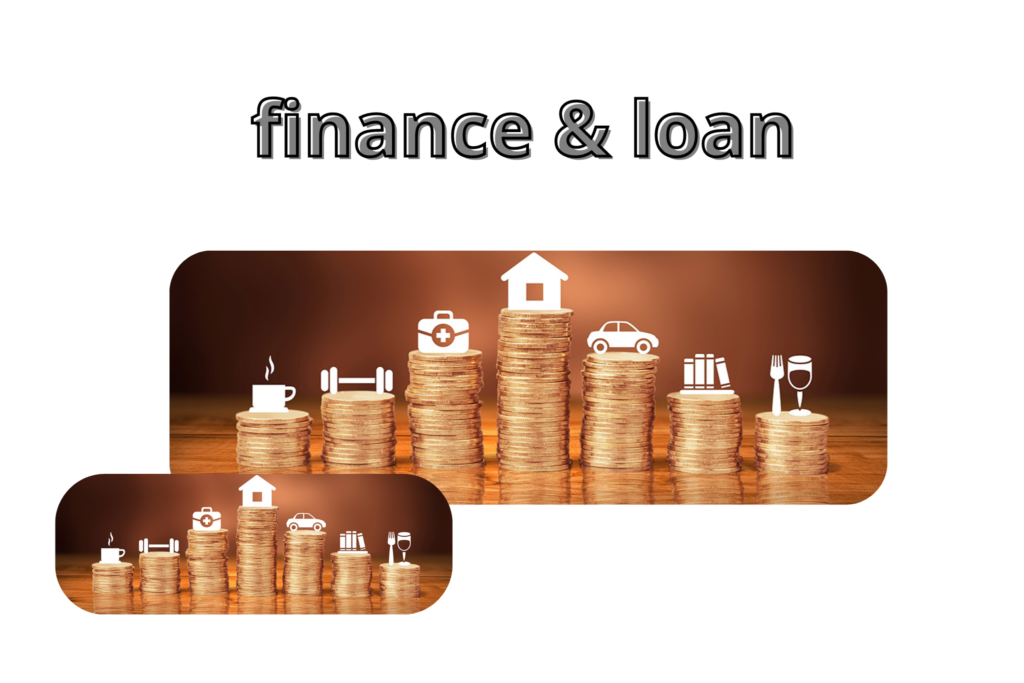Understanding Finance and Loans: A Beginner’s Guide

In today’s fast-paced world, finance and loans play a crucial role in managing personal and business needs. Whether you’re looking to grow your wealth, buy a home, or expand a business, understanding the basics of finance and loans is essential.
What is Finance?
Finance refers to the management of money, including investments, budgeting, and savings. It’s a broad field that involves overseeing financial activities to ensure individuals, companies, and governments can manage their resources effectively. Finance can be broken down into three key areas:
- Personal Finance: This involves managing personal finances such as savings, budgeting, and investments. Personal finance also includes managing debt, retirement plans, and taxes.
- Corporate Finance: This area focuses on managing a company’s finances, including funding operations, capital structure, and maximizing shareholder value. It also involves managing risks and investments to grow the business.
- Public Finance: This involves the financial management of government bodies, including the collection of taxes, government spending, and national debt.
Types of Loans
A loan is a form of debt where one party borrows money from another, typically with an agreement to repay the loan with interest over time. Loans can be divided into various categories based on the purpose, interest rate, and repayment terms. Here are the most common types:
- Personal Loans: These loans are typically unsecured and can be used for various personal expenses, such as medical bills, vacations, or home renovations. Personal loans usually have fixed interest rates and repayment terms.
- Home Loans (Mortgages): Mortgages are loans used to purchase or refinance a home. These loans are secured by the property and often have long repayment terms (15-30 years) with either fixed or variable interest rates.
- Auto Loans: Auto loans are used to finance the purchase of a vehicle. Like mortgages, these loans are secured by the car itself. They usually have shorter repayment terms, ranging from 3 to 7 years.
- Student Loans: Designed to help pay for education, student loans typically offer lower interest rates and flexible repayment terms. They can be either federal (government-backed) or private loans from financial institutions.
- Business Loans: These loans are used to start, grow, or manage a business. Business loans can be secured or unsecured and may be short-term or long-term, depending on the business’s needs.
Interest Rates: Fixed vs. Variable
When you take out a loan, one of the most important factors to consider is the interest rate. This is the cost of borrowing, expressed as a percentage of the loan amount. There are two main types of interest rates:
- Fixed Interest Rate: This rate remains constant throughout the loan term, meaning your payments stay the same. Fixed-rate loans offer stability and are easier to budget for, making them popular for long-term loans like mortgages.
- Variable Interest Rate: This rate can fluctuate based on market conditions. While a variable rate loan might offer lower initial rates, your payments can increase if interest rates rise, making it riskier.
How to Choose the Right Loan
Choosing the right loan depends on your financial situation, goals, and risk tolerance. Here are some factors to consider:
- Loan Purpose: The first step is determining what you need the loan for. A mortgage would be suitable for buying a home, while a personal loan is better for general expenses.
- Interest Rates: Compare different loans and choose one with a competitive interest rate. A lower interest rate can save you money over the loan term.
- Repayment Terms: Consider how long you’ll need to repay the loan. Shorter terms mean higher monthly payments but less interest paid overall, while longer terms spread out the payments but result in more interest.
- Credit Score: Your credit score plays a significant role in determining your eligibility and the interest rate you’ll receive. A higher credit score can lead to better loan terms.
- Fees and Charges: Be aware of any additional fees associated with the loan, such as processing fees, late payment fees, or prepayment penalties.
The Importance of Responsible Borrowing
Borrowing can be a helpful tool, but it’s essential to borrow responsibly. Here are some tips:
- Borrow only what you need: Taking on more debt than necessary can lead to financial stress and difficulty in repayment.
- Budget for repayments: Make sure you can comfortably afford the monthly payments before taking out a loan.
- Understand the loan terms: Be clear about the interest rates, repayment schedule, and any fees associated with the loan.
- Maintain a good credit score: A good credit score can open up more favorable loan options, so make sure to pay your bills on time and manage your debts wisely.
Conclusion
Finance and loans are integral to modern life, helping individuals and businesses achieve their goals. By understanding the different types of loans and how to manage them, you can make informed decisions that align with your financial goals. Remember to borrow responsibly, compare your options, and always prioritize financial health.